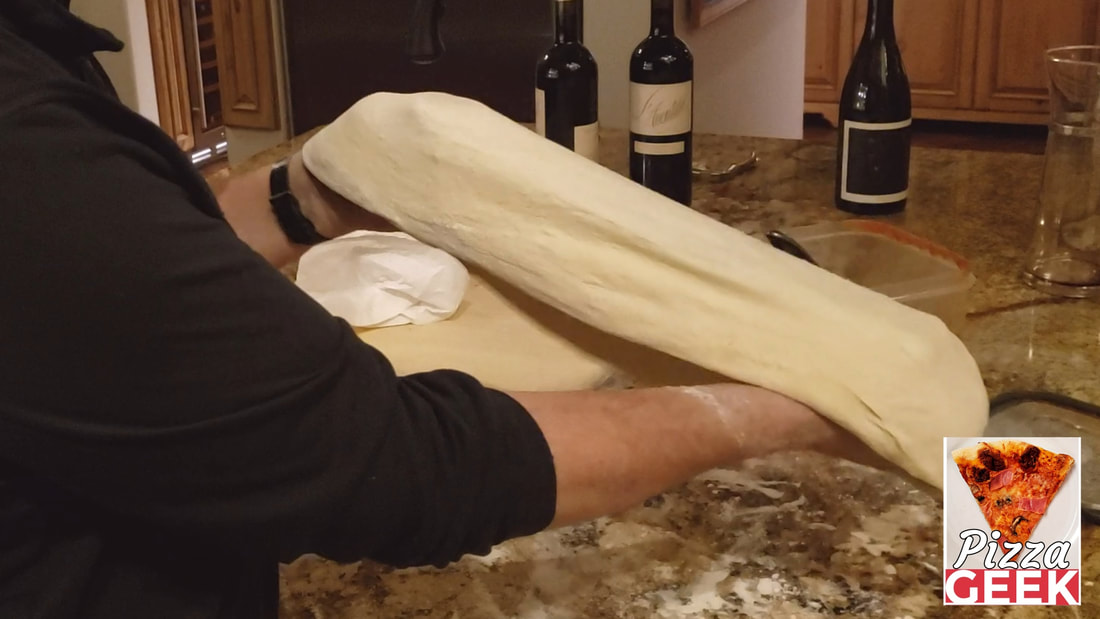|
Here at Pizza Geek, we are big fans of Rione, the Roman-style pizzeria in Philly. It's an authentic "pizza al taglio" joint, which means "pizza by the cut." The make long, sheet-pan pies that are cut with scissors and served up crunchy, bubbly and brilliant. The one exception we take to this review is that the secret is in the "made-from-scratch dough." Come on. Every good pizzeria is making their dough from scratch. Hunt Brothers pizzerias are not making their dough from scratch. That's the pizza you buy in gas stations. So, despite the fact that it raises some questions about the writer's chops, we concur with the evaluation of Rione as one of Philly's best. And, for an added bonus, you can hear an interview with the married couple who own the joint at CoupleCo.com.
0 Comments
Why is pizza so confusing? Simple. Pizza is not one thing. In Italy, it's all pretty close to the same thing. Naples has Neapolitan pizza. Elsewhere in Italy, the pizza is a little more American-esque. But when you come to the US, no two pizzas are alike. Case in point: no two Neo-Neapolitan style pizzas are ever alike. And in this article from trade magazine Pizza Today, Scott Wiener explains why.
HOW TO STRETCH PIZZA DOUGH... A few weeks back, someone asked how to keep a pizza dough round when rolling it out. My reply was: Simple--NEVER roll out a dough ball. It's easier to keep it round when stretching it. And, rolling creates a problem: it de-gasses the dough. Pressing all the air out of your dough yields a flat, dense crust without the structure that makes a pizza taste so good. As promised, here's a quick & dirty video showing how it's done. (Yes, you can also toss it. But throws flour all over your kitchen and your cameraman.) Does punching down your dough really matter? Yes, this is a total geek question. A lot of folks have heard of punching dough, but don't really know what it is. And a lot of us who make pizza know and don't bother. But it finally occurred to me, after hearing a baking expert talk about the importance of the punch, maybe I should try this. So I did.
OMG! You can barely tell the difference! But...it's there. Both of these dough balls came from the same batch. However, one was "punched." (It's a dangerous word, because really, no actual punching is involved. It is gently turned in on itself to re-form the ball.) They proofed for quite awhile--four days. The punch occurred on day 2. On day 4, we made pizza. In the accompanying photo, the crust on the left is from the punched dough. The crust on the right is from the un-punched dough. There is a noticeable difference, both in appearance and in taste. The structure of the punched dough is more consistent. The bubbles in the crust are more uniform. In taste, the crust isn't quite as dense as the crust from the un-punched dough ball. Here's the problem... They're both pretty darn good. At the end of the day, it seems that whether to punch or not to punch is personal preference. We'll try this some more and see if anything changes. But with a well-proofed dough, which has plenty of character and yields a really nice crust, the difference is marginal. (Your mileage may vary.) This is a simple one: NEVER roll it. Rolling is bad.
A) It's hard to control the shape of a pizza dough that way. B) Worse, it presses all of the air out of the dough. You end up with a flat, dense crust, which is not what you want. Instead, use a floured board and your hands. 1) Flatten the dough ball with the palm of your hand. 2) Using both palms, start pressing and stretching the dough ball on the board until it's wide enough to pick up with both hands. 3) Using the knuckles of both hands, get under the rim of the dough and start stretching it until it is the size you desire. It takes a little practice. But you get a much better, rounder pizza. (I'll see if I can post a video of this process.) |
AuthorBlaine Parker is the award-winning author of the bestselling, unusual and amusing how-to pizza book, Free The Pizza. Also known as The Pizza Geek and "Hey, Pizza Man!", Blaine is fanatical about the idea that true, pro-quality pizza can be made at home. His home. Your home. Anyone's home. After 20 years of honing his craft and making pizza in standard consumer ovens across the nation, he's sharing what he's learned with home cooks like you. Are you ready to pizza? Archives
July 2024
Categories
All
|
© Copyright 2021, 2022, 2023, 2024. All rights reserved.
As a ShareASale Affiliate and an Amazon Associate, we earn a small percentage from qualifying Amazon purchases at no additional cost to you.
When you click those links to Amazon (and a few other sites we work with), and you buy something, you are helping this website stay afloat, and you're helping us have many more glorious photographs of impressive pizza.
When you click those links to Amazon (and a few other sites we work with), and you buy something, you are helping this website stay afloat, and you're helping us have many more glorious photographs of impressive pizza.






 RSS Feed
RSS Feed